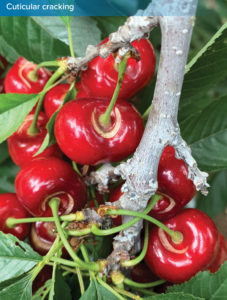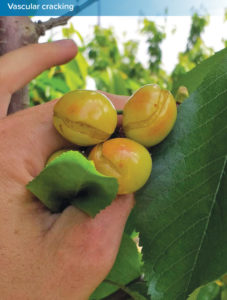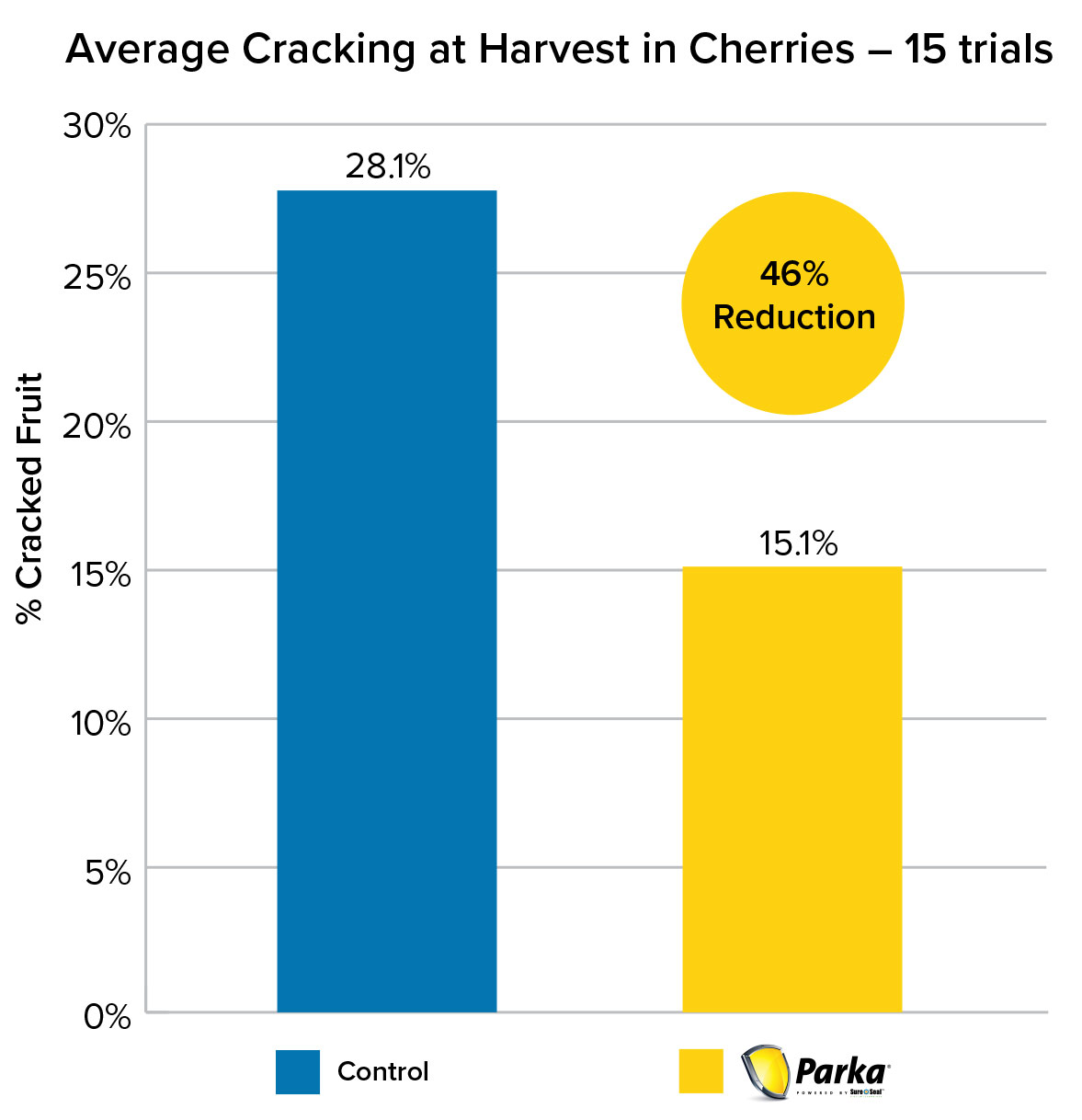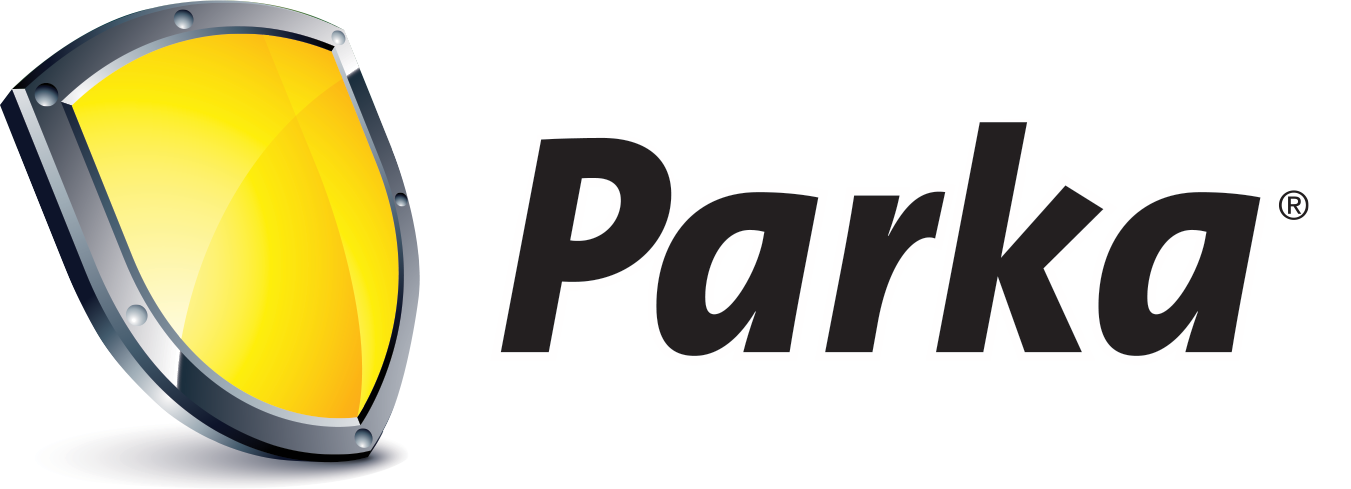There are two main types of cherry cracking:
 Cuticular cracking occurs due to surface water transport and absorption through cuticular microfractures. As the fruits expand in size, the stress of such growth allows the development of cuticular microfractures. These microfractures create a site of stress in the epidermal cells facilitating microfracture extension, which can cause cracking, especially in the presence of water. Often, this type of cracking appears on the shoulders of the fruit when water pools in the stem bowl or at the distal end where water droplets can form (Knoche and Winkler, 2017).
Cuticular cracking occurs due to surface water transport and absorption through cuticular microfractures. As the fruits expand in size, the stress of such growth allows the development of cuticular microfractures. These microfractures create a site of stress in the epidermal cells facilitating microfracture extension, which can cause cracking, especially in the presence of water. Often, this type of cracking appears on the shoulders of the fruit when water pools in the stem bowl or at the distal end where water droplets can form (Knoche and Winkler, 2017).
 Vascular cracking is caused by water that is taken up by the roots and translocated through the vascular system, which increases the turgor pressure in the mesocarp cells causing the fruit to crack from within. This type of cracking usually occurs after high volume rain events followed by warm temperatures, and it appears on the lateral portion of the fruit (Measham et al., 2010).
Vascular cracking is caused by water that is taken up by the roots and translocated through the vascular system, which increases the turgor pressure in the mesocarp cells causing the fruit to crack from within. This type of cracking usually occurs after high volume rain events followed by warm temperatures, and it appears on the lateral portion of the fruit (Measham et al., 2010).
Along with cultural practices, cuticle supplements can play a large role in reducing cherry cracking. Parka®, a plant-based product, supplements the cuticle of the cherry — coating it with a clear, hydrophobic, and elastic lipid bi-layer that expands along with the developing fruit. This added layer not only provides hydrophobicity that repels water from the fruit surface, but it also seals the cuticular microfractures that are the predecessor for fruit cracking, especially in the presence of water.

Sweet cherries are susceptible to cracking that occurs when the fruit’s surface burst under pressure. The economic impact of cracking for cherry growers can be severe with 20%-40% of cherries being classified as unmarketable.
Leave your contact to learn if you qualify for a 2-4 acres demo
What Do Growers Like About Parka?
- Proven to reduce cherry cracking by up to 46% compared to untreated control.
- Fruit quality and storage ability improvement.
- Broad tank-mixed compatibility.
- High operational efficiency.
- Exempt from maximum residue levels.
- No preharvest interval; no worker reentry interval.
Parka Program for Cherries
For the preventive program, apply 1 gallon of Parka per acre first at 100% shuck fall and the second application at straw color. If rain events are expected after straw, reapply as needed. For reactionary applications, apply within 48-72 hours before a rain event.


